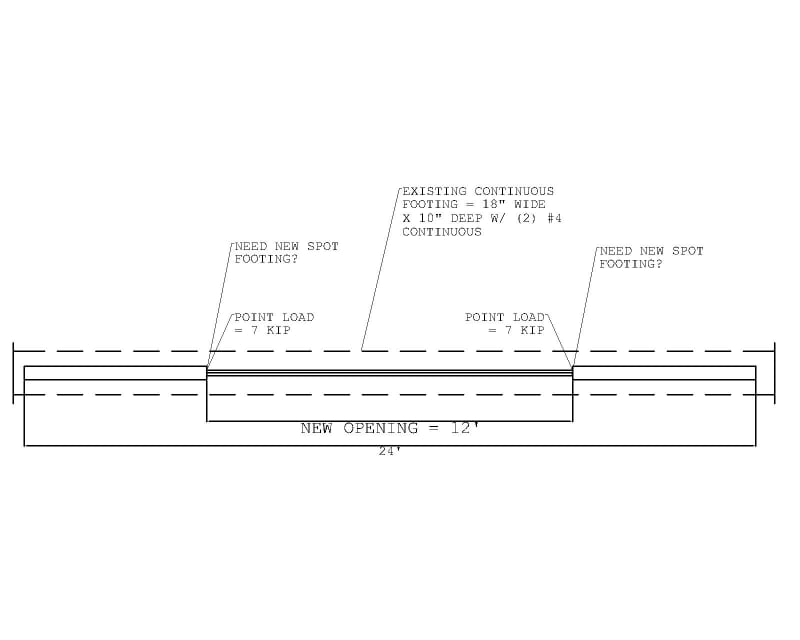Apache1
Structural
- Dec 14, 2021
- 31
I had a question come up on a residential basement remodel. As I don't do much residential work (or remodel work in general) I wasn't sure what to do here. As shown below the owner is going to remove a 12' section of bearing wall in their basement and replace it with a beam. The reactions on each end of the beam will be approximately 7 kips. There is an existing strip footing through this location that is 18" wide x 10" deep and has (2) #4 bars continuous in the bottom of the footing (the owner has their original plans from when they built a few years ago). Soil bearing is assumed to be 1,500 psf. If this was new construction I'd put a 30"x30" square spot footing at the locations of the point loads. Another engineer is telling me that it's fine to just bear the new columns onto the existing footing. In my mind 7 kips is too much for the existing strip footing. However, I'm not sure how to model this to show that it will or won't work as-is. It doesn't feel right to say that the existing footing acts as a beam that spreads the load out over the length of the footing. What do you all think?


